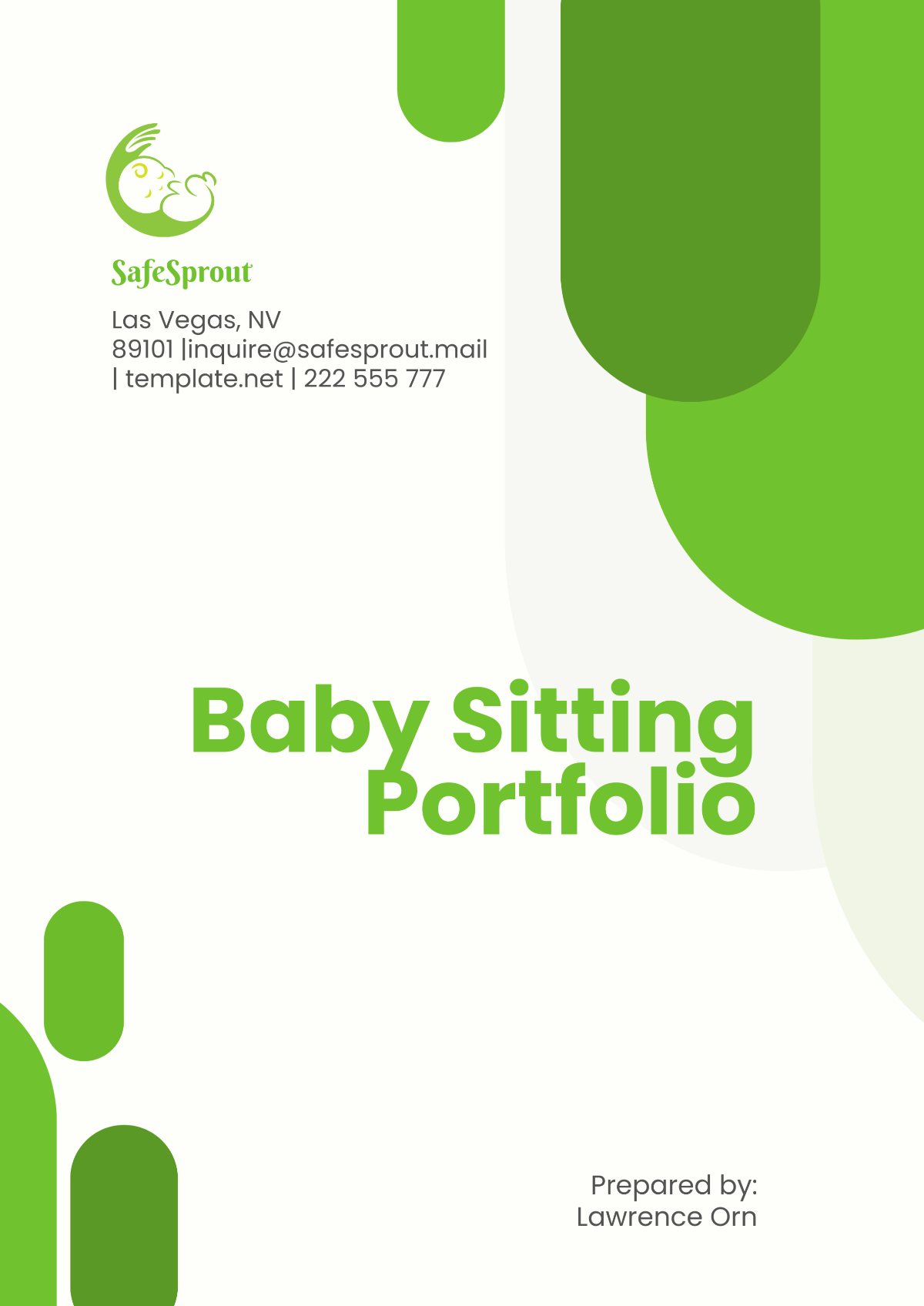Startup Investment Portfolio
Executive Summary
Welcome to the investment portfolio overview of [Your Company Name]. This document outlines our strategic approach to investment, focusing on diversifying assets across various sectors and stages of business development to optimize returns while managing risks. Our key investment objectives include capital growth, market penetration, and innovation leadership within our industry. As of the latest review, our portfolio demonstrates strong performance against our benchmarks, reflecting the effectiveness of our investment strategy and execution.
Investment Strategy
Investment Philosophy and Approach
At [Your Company Name], our investment philosophy is grounded in rigorous market analysis, innovation, and sustainability. We prioritize investments in sectors where technology and innovation can drive significant value and growth. Our approach combines both passive and active investment strategies, focusing on long-term growth potential and short-term market opportunities.
Asset Allocation Strategy
Our current asset allocation is as follows:
Assets | Percentage |
|---|---|
Technology Sector | 40% |
Renewable Energy | 25% |
Healthcare | 20% |
Emerging Markets | 15% |
This allocation reflects our belief in the growth potential of these sectors and our commitment to a sustainable future.
Risk Management Strategy
We employ a multi-layered risk management strategy, including diversification, regular market analysis, and stop-loss measures to protect against significant downturns. Our team continuously monitors market conditions and adjusts our portfolio to mitigate risks and capitalize on new opportunities.
In addition to our existing risk management strategies, [Your Company Name] employs an advanced analytics-based approach to further strengthen our portfolio's resilience against unforeseen market dynamics. This involves leveraging big data and machine learning algorithms to predict market trends, identify risk patterns, and optimize our investment decisions in real-time. By integrating these predictive analytics into our risk assessment process, we are not only able to anticipate potential downturns more accurately but also to uncover unique investment opportunities that align with our risk tolerance and strategic objectives. This forward-looking approach enables us to maintain a competitive edge, ensuring that our portfolio is not only safeguarded against volatile market conditions but is also positioned to capitalize on trends before they become mainstream. This proactive and data-driven methodology underscores our commitment to not just managing but mastering the complexities of risk, turning potential threats into avenues for growth and innovation within our investment portfolio.
Market Analysis
The current global market presents a complex landscape influenced by technological advancements, geopolitical tensions, and environmental concerns. The technology sector continues to thrive, driven by innovations in artificial intelligence (AI), machine learning (ML), and cloud computing. These technologies are not only revolutionizing traditional industries but also creating new markets and opportunities for startups and investors alike.
Renewable energy is another area experiencing significant growth, fueled by increased awareness of climate change and governmental policies supporting sustainable energy sources. Solar and wind energy technologies are becoming more cost-effective and efficient, attracting substantial investments.
The healthcare sector is undergoing transformation, accelerated by the COVID-19 pandemic. Telehealth, digital therapeutics, and personalized medicine are gaining traction, offering promising investment opportunities due to growing demand and technological integration.
Emerging markets offer unique opportunities, particularly in digital infrastructure, fintech, and e-commerce. These markets are characterized by rapid urbanization, increasing internet penetration, and a young, growing consumer base seeking digital services and products.
Portfolio Composition
Our portfolio is strategically diversified to balance risk and opportunity across high-growth sectors.
Sector | Allocation | Expected Growth |
|---|---|---|
Technology | 40% | 15% per annum |
Renewable Energy | 25% | 20% per annum |
Healthcare | 20% | 10% per annum |
Emerging Markets | 15% | 12% per annum |
Technology Sector (40%): This significant allocation underscores our conviction in the technology sector's potential for innovation-driven growth. With the rapid advancements in AI, blockchain, and cybersecurity, we anticipate substantial returns. The technology sector's 40% allocation reflects our strategy to capitalize on digital transformation trends and the increasing reliance of businesses and consumers on cutting-edge technological solutions.
Renewable Energy (25%): Our investment in renewable energy at 25% of the portfolio highlights our commitment to sustainability and our belief in the long-term growth prospects of this sector. As global efforts to combat climate change intensify, renewable energy sources like solar and wind are becoming increasingly vital and economically viable, presenting attractive investment opportunities.
Healthcare (20%): The 20% allocation to healthcare reflects our focus on sectors benefiting from demographic trends, technological advancements, and evolving consumer health awareness. Investments in digital health, biotechnology, and personalized medicine are expected to drive growth, leveraging innovations to meet the growing demand for healthcare services and products.
Emerging Markets (15%): The 15% allocation to emerging markets is strategic, targeting regions with high growth potential due to economic development, digital penetration, and a burgeoning middle class. This investment seeks to exploit the rapid urbanization, technological adoption, and consumer market expansion in these regions, offering a diversified risk profile and growth opportunities beyond mature markets.
This table and the accompanying explanations serve to illustrate the deliberate and strategic diversification of [Your Company Name]'s investment portfolio. By allocating assets across these sectors, we aim to balance risk and leverage growth opportunities in high-potential areas, aligning with our long-term investment objectives and market outlook.
Performance Analysis
Over the last fiscal year, [Your Company Name]'s investment portfolio achieved remarkable growth, outperforming our initial benchmarks. The portfolio's success can be attributed to strategic investments in high-growth sectors, particularly technology and renewable energy.
Technology Sector Performance: With a 40% allocation, this sector contributed significantly to the portfolio's overall performance, achieving a 25% return. Investments in AI and cloud computing startups were particularly fruitful, benefiting from the accelerated digital transformation across industries.
Renewable Energy Sector Performance: Representing 25% of our portfolio, the renewable energy sector saw a 20% return. Our focus on innovative solar and wind energy solutions capitalized on the growing demand for sustainable energy sources.
Healthcare Sector Performance: Despite market volatility, our investments in healthcare technology resulted in a 15% return, underscoring the sector's resilience and the potential of digital health solutions.
Emerging Markets Performance: Our strategic investments in emerging markets' digital infrastructure and services yielded a 12% return, demonstrating the effectiveness of our market entry and growth strategies in these regions.
Key Investments Overview
Key Investments | Details |
|---|---|
[Partner Company Name] | A standout in our portfolio, [Partner Company Name], has shown exceptional growth, developing cutting-edge AI and ML solutions. Our initial investment capitalized on the company's potential to lead in smart technology applications, from healthcare diagnostics to autonomous vehicles. The decision was underpinned by their strong R&D capabilities and a robust pipeline of innovative products. |
[Partner Company Name] | [Partner Company Name] is at the forefront of the renewable energy sector, specializing in scalable solar and wind energy projects. Our investment supports their mission to make renewable energy accessible and affordable, aligning with global sustainability goals. Their recent expansion into new markets and partnerships with governments for large-scale projects highlight their growth trajectory and the impact of our investment. |
Risk Management
Our risk management strategy is comprehensive, addressing market volatility, regulatory changes, technological obsolescence, and geopolitical risks. We employ a combination of diversification, continuous monitoring, and strategic hedging to mitigate these risks.
Market Volatility: To combat market swings, we diversify investments across sectors and geographies, reducing potential impacts from any single market downturn.
Regulatory Changes: We stay ahead of regulatory changes by engaging with policymakers and industry groups, ensuring our investment strategies remain compliant and adaptable to new laws.
Technological Obsolescence: Our focus on innovation and continuous market analysis helps us identify and invest in emerging technologies, reducing the risk of obsolescence.
Geopolitical Risks: We monitor global geopolitical developments closely, adjusting our investment strategies to minimize exposure to unstable regions or sectors.
Financial Analysis
The financial health of our investment portfolio is robust, reflecting strategic decision-making and market positioning. Key metrics include:
Return on Investment (ROI): Our portfolio achieved an 18% ROI, surpassing industry averages and our initial targets. This success is attributed to high-performing sectors and effective asset allocation.
Internal Rate of Return (IRR): The IRR stands at 20%, indicating the profitability of our investments and the effectiveness of our long-term strategy.
Cash flow analysis reveals positive trends, with significant reinvestment opportunities and liquidity to capitalize on new investment prospects. Our financial projections for the coming years are optimistic, with expected growth in ROI and IRR as we expand our investments in high-potential sectors.
Future Strategy and Outlook
Looking forward, [Your Company Name] is poised to adapt and expand its investment strategy in response to evolving market conditions and emerging opportunities.
Short-term Strategy: We plan to increase our investments in the healthcare and renewable energy sectors, leveraging current market trends and technological advancements. This includes exploring opportunities in digital health and next-generation renewable technologies.
Long-term Strategy: Our long-term vision involves deeper penetration into emerging markets, focusing on digital infrastructure, fintech, and e-commerce. We aim to build strategic partnerships and invest in startups with disruptive potential to drive sustainable growth.
Market Opportunities: We are closely monitoring developments in AI, biotechnology, and sustainable materials, anticipating significant investment opportunities in these areas. Additionally, regulatory changes present opportunities for innovation in healthcare and energy.
The outlook for [Your Company Name]'s investment portfolio is highly positive. Our strategic approach, combined with a commitment to innovation and sustainability, positions us well to capitalize on future trends and deliver continued growth and value to our stakeholders.
Appendices
Appendix A: Glossary of Terms
This glossary defines key investment and financial terms used throughout the document, ensuring clarity and understanding for all readers.
Asset Allocation: The strategy of distributing investments across various asset classes (e.g., stocks, bonds, real estate) to balance risk and reward.
ROI (Return on Investment): A measure of the profitability of an investment, calculated as the net gain from the investment divided by the cost of the investment.
IRR (Internal Rate of Return): A metric used to estimate the profitability of potential investments, calculated as the rate of return that makes the net present value of all cash flows from a particular project equal to zero.
Market Volatility: Refers to the rate at which the price of securities increases or decreases for a given set of returns.
Diversification: An investment strategy that spreads investments across various financial instruments, industries, and other categories to reduce exposure to any single asset or risk.

















































